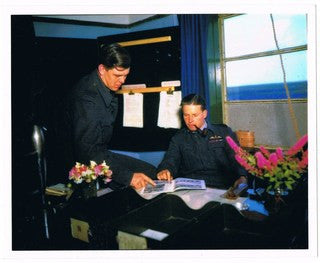As Paul has often said, no niche of collectibles captures history more poignantly than war medals and militaria. As the years go on, it is more crucial than ever that collectors preserve these artefacts; reminders of heroism, bravery and valour in the face of defeat.
Which raises the question: what exactly has happened to these rare and important war medals over the years? And are they being well looked-after on the private collectors' markets?
These queries bring us to one of the great things about collectibles: the laws of supply and demand which underpin the markets.
Because of supply and demand, the rarest and most coveted medals have been steadily growing in value over the years. Alongside their historical significance, these medals are also appreciating as 'tangible assets'.
This is good news for the medals' preservation. Increasing values mean that only the most dedicated collectors - or museums and other institutions - can afford to buy them. So these rare artefacts of wartime bravery are more likely to find good homes.
 Captain Noel Chavasse was twice awarded the VC for his actions in |
Among the markets' most valued and coveted medals are Victoria Crosses, the highest military decoration for valour "in the face of the enemy" awarded to members of the British and Commonwealth armed forces.
To put the rising values of VC's into perspective, the VC worn by Private Edward Kenna of New Guinea sold for £678,000 in a private sale, back in July 2011.
Compare this to the VC of Lieutenant William D Kenny who fought on the north-west frontier. Kenny's medal brought £52,000, sold to noted collector Lord Michael Ashcroft. That was on May 6, 1998, auctioned at Spink - although £52,000 wasn't a 'typical' VC value back then.
As with any collectible medal, the attached story is key to its value - and consequently how much collectors will pay for it. In Spink's same May 6 sale, Ashcroft also bought a Victoria Cross awarded to Flying Officer Lloyd Alan Trigg during World War II. Ashcroft paid £120,000.
Lloyd Trigg's VC back story is among history's most outstanding. The brave pilot continued to drop his bombs around a U-boat, helping to sink it, despite heavy damage to his aircraft. The Battle of the Atlantic yielded many fine stories of air attacks on underwater craft.
But, as the London Gazette reported in October 1943, "Flying Officer Trigg's exploit stands out as an epic of grim determination and high courage. His was the path of duty that leads to glory."
Trigg's aircraft crashed 300 yards behind the U-Boat, killing both him and his crew. The only witnesses to his high courage were the U-boat crew members - many of whom later spoke of his immense bravery.
Trigg's VC represented the VC market's "high end" back in 1998. Compare this to the £678,000 Edward Kenna's "high end" VC sold for in 2011, and we can see that the top-end value of a Victoria Cross medal has grown by roughly 14.25% year-on-year.
Again, there are exceptions.
Like the Victoria Cross medal of double VC winner Captain Noel Chavasse. During World War I, Chavasse twice attended to the wounded with brave disregarded for enemy fire - first on 9 August 1916, at Guillemont, France and later during the period 31 July to 2 August 1917, at Wieltje, Belgium.
Chavasse, who later died from injuries sustained in Belgium, was awarded the VC twice in recognition of each of these occasions. The Captain's VC and bar (equivalent to a 'second VC') later sold for £1.5m to Lord Michael Ashcroft, in a private sale in 2009.
As with Lloyd Trigg's VC, the tragedy attached to Chavasse's medal - like Trigg, he died as a result of his bravery - seemed to encourage the VC and bar's buyer to a higher price.
Thanks to these growing values, historians and those with a passion for history can rest assured that these relics of mankind's bravery are being well looked-after; as devoted collectors like Lord Ashcroft preserve and display them for the benefit for future generations.







